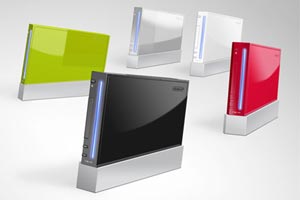LOS ANGELES: You won’t need special glasses to play games in 3-D on Nintendo’s newest handheld device, but don’t expect the technology to hit big-screen TVs anytime soon.
The 3DS, as the Japanese video game maker’s upcoming gadget is called, uses a technology that’s specially suited to a handheld device. It’s a “parallax barrier” LCD screen, whose pixels are aligned so your left and right eyes see different portions of the image.
It’s as if two sets of thin blinds were laid over the screen so each eye sees its own version. Combined in the brain, the two versions become a 3-D image, explained Satoru Iwata, president and CEO of Nintendo Co.
Nintendo showed off the 3DS along with a broad swath of upcoming video games at the E3 Expo in Los Angeles, an industry conference of 45,000. To please its longtime fans, Nintendo also introduced updates to classic game franchises like “Donkey Kong,” “Zelda” and “Kirby.”
The technology behind the 3Ds requires viewers to sit at a certain angle and distance from the screen. That’s why it works for a handheld device but not — at least not yet — for a TV.
Wedbush Morgan analyst Michael Pachter said Nintendo “blew people away” with the 3DS. But the big question is the price, as the technology behind it could be expensive.
 Nintendo didn’t say how much the 3DS would cost or when it will be available. But Iwata didn’t sound worried about a price barrier and noted that Nintendo has long been in the business of marketing products that appeal to the mass market.
Nintendo didn’t say how much the 3DS would cost or when it will be available. But Iwata didn’t sound worried about a price barrier and noted that Nintendo has long been in the business of marketing products that appeal to the mass market.
When the company launched the Wii in the fall of 2006 at $250, the console easily sold online for months at times that suggested price.
The new device and game updates are part of an effort by Nintendo to stay ahead of its rivals by sticking to what it knows best — video games. Meanwhile, Sony Corp and Microsoft Corp are working to expand the reach of their consoles beyond gaming, marketing them as all-in-one entertainment hubs.
So far, Nintendo’s strategy has paid off. The company has sold at least 70.9 million Wiis, compared with over 40 million Xbox 360 consoles from Microsoft and 35.7 million PlayStation 3s from Sony.


